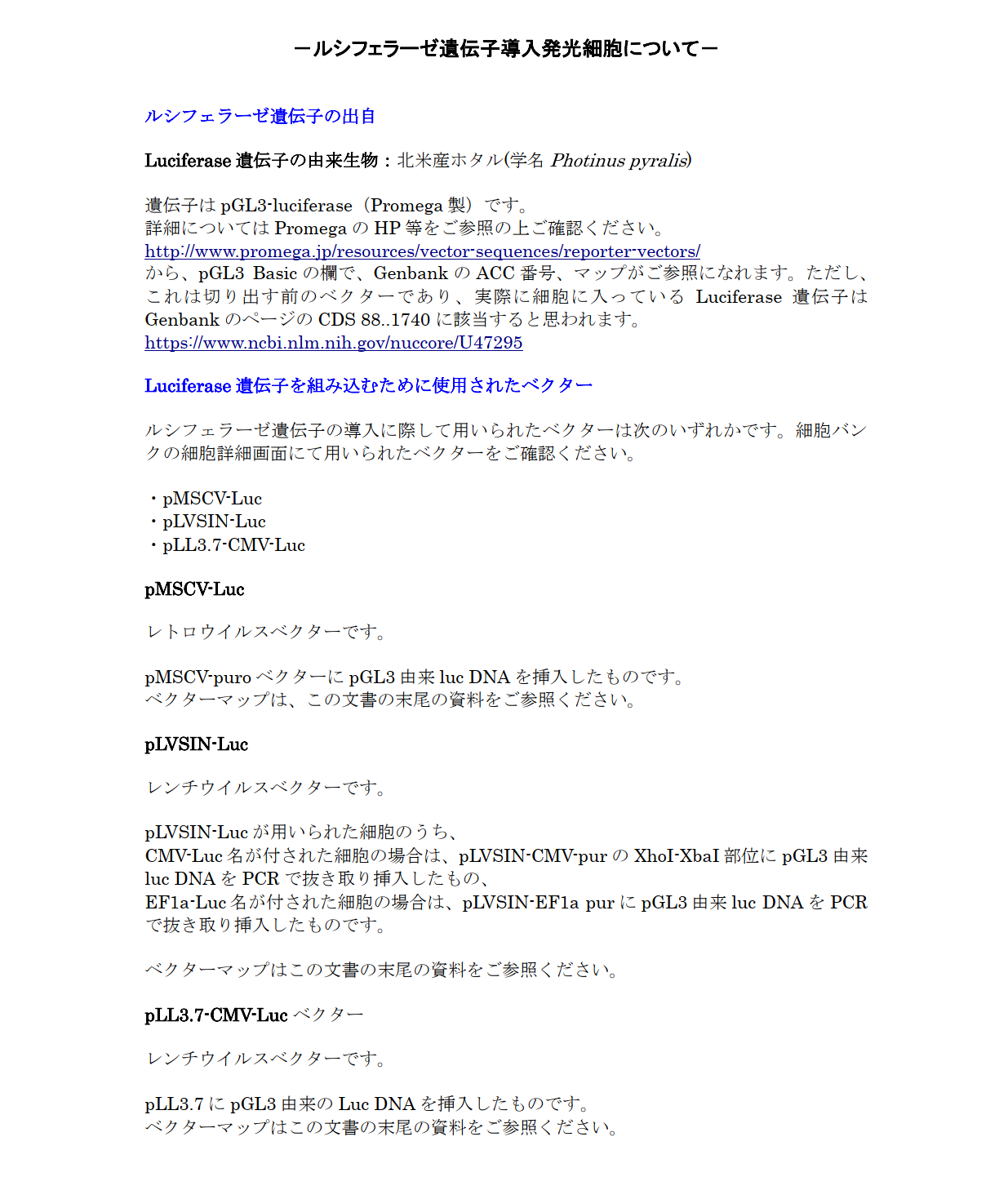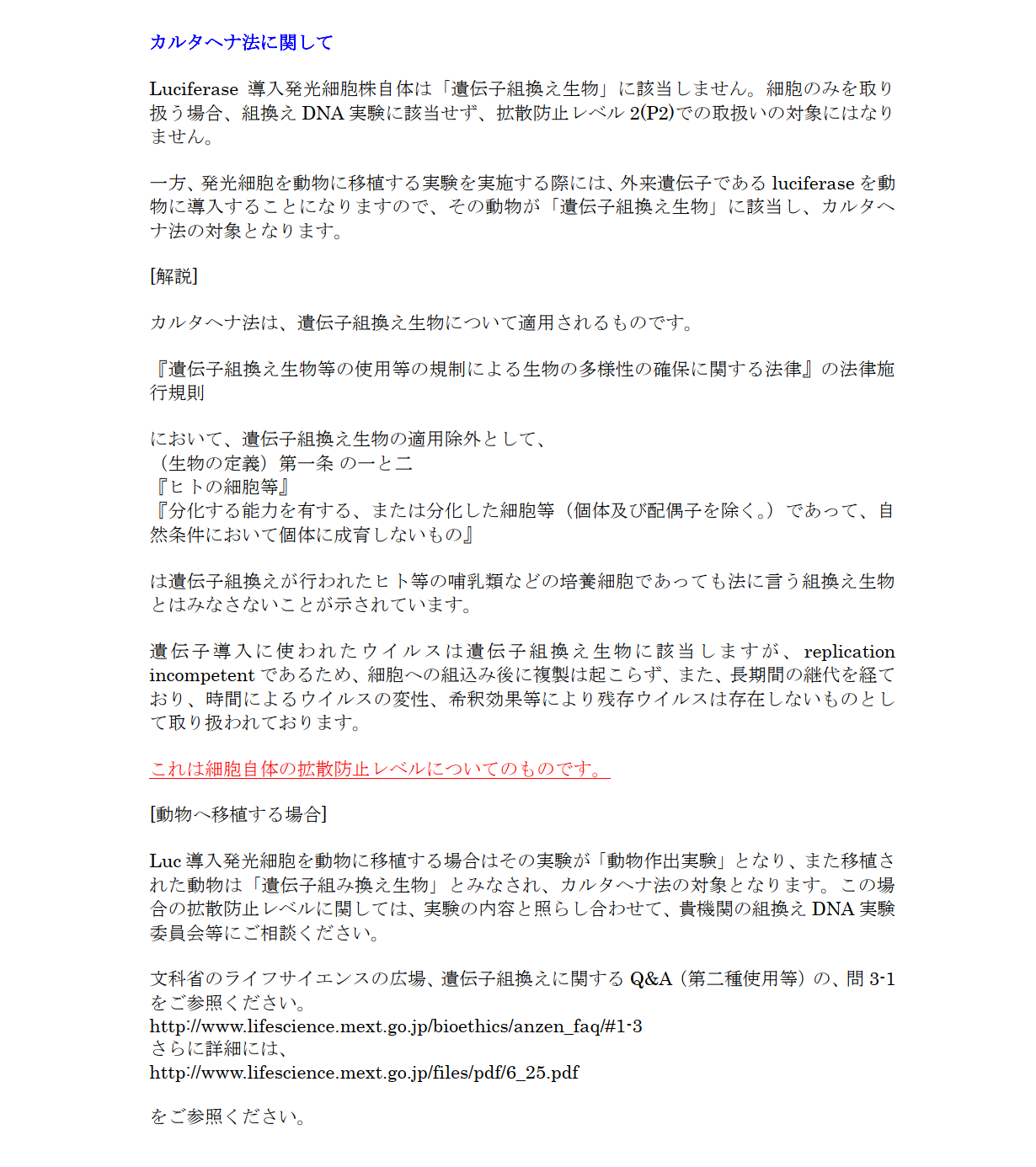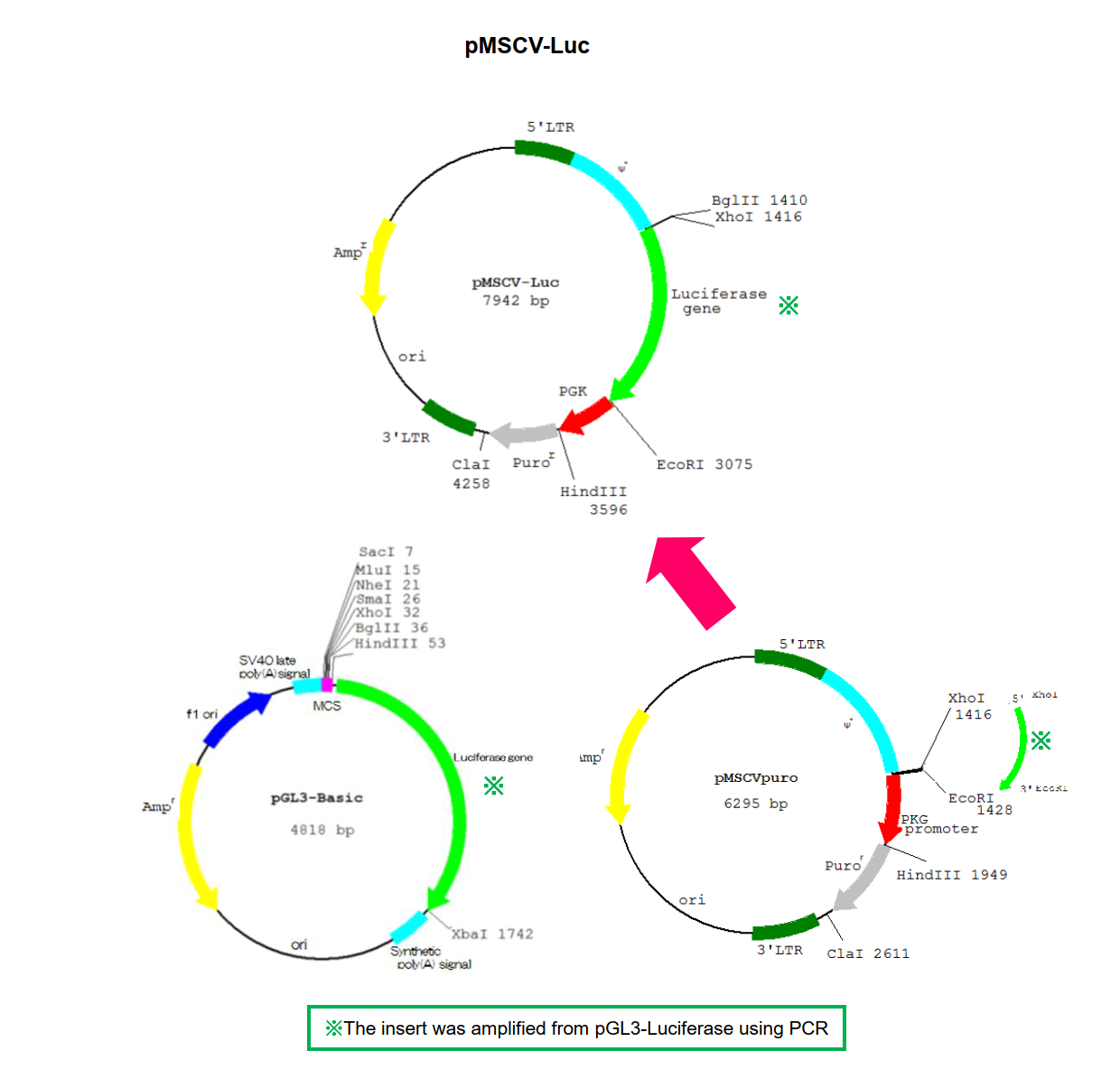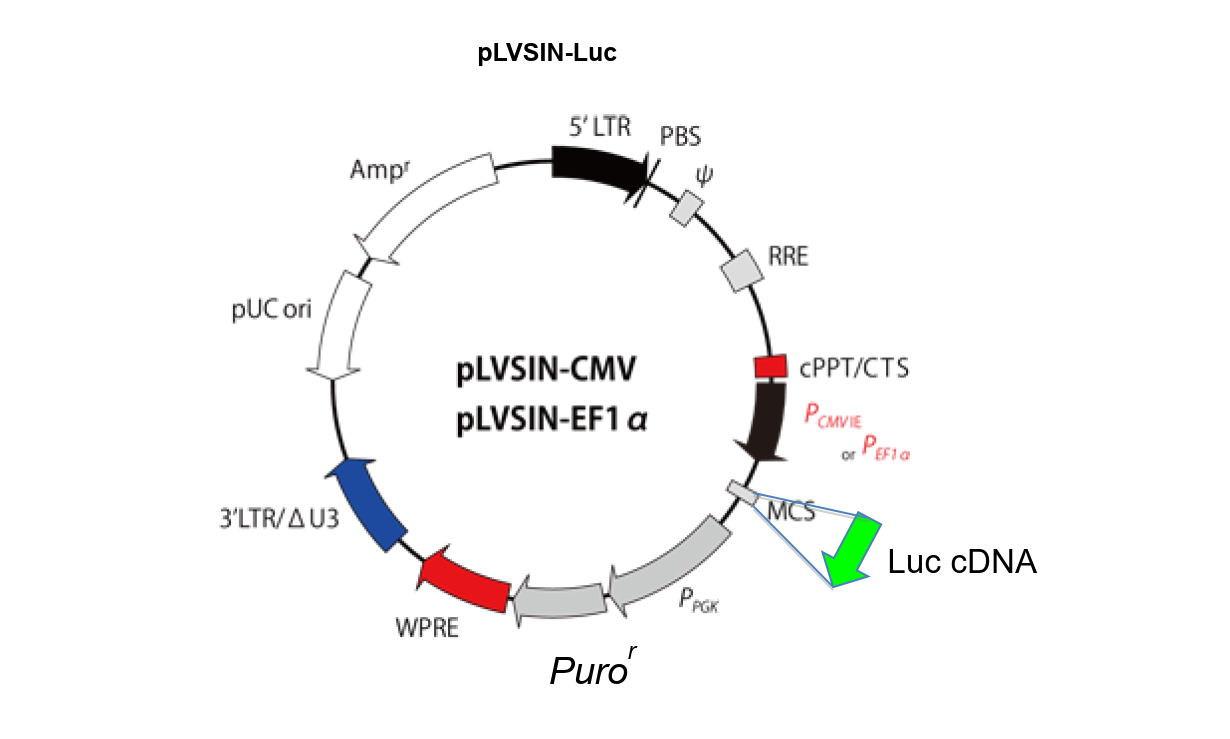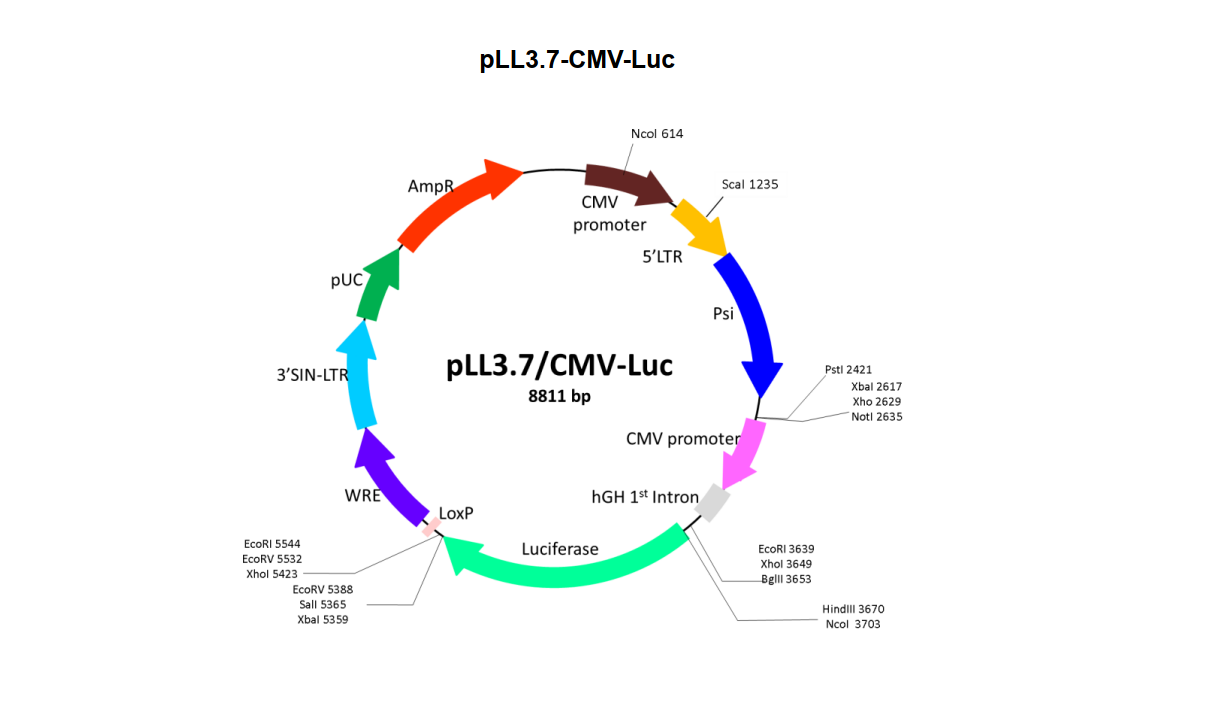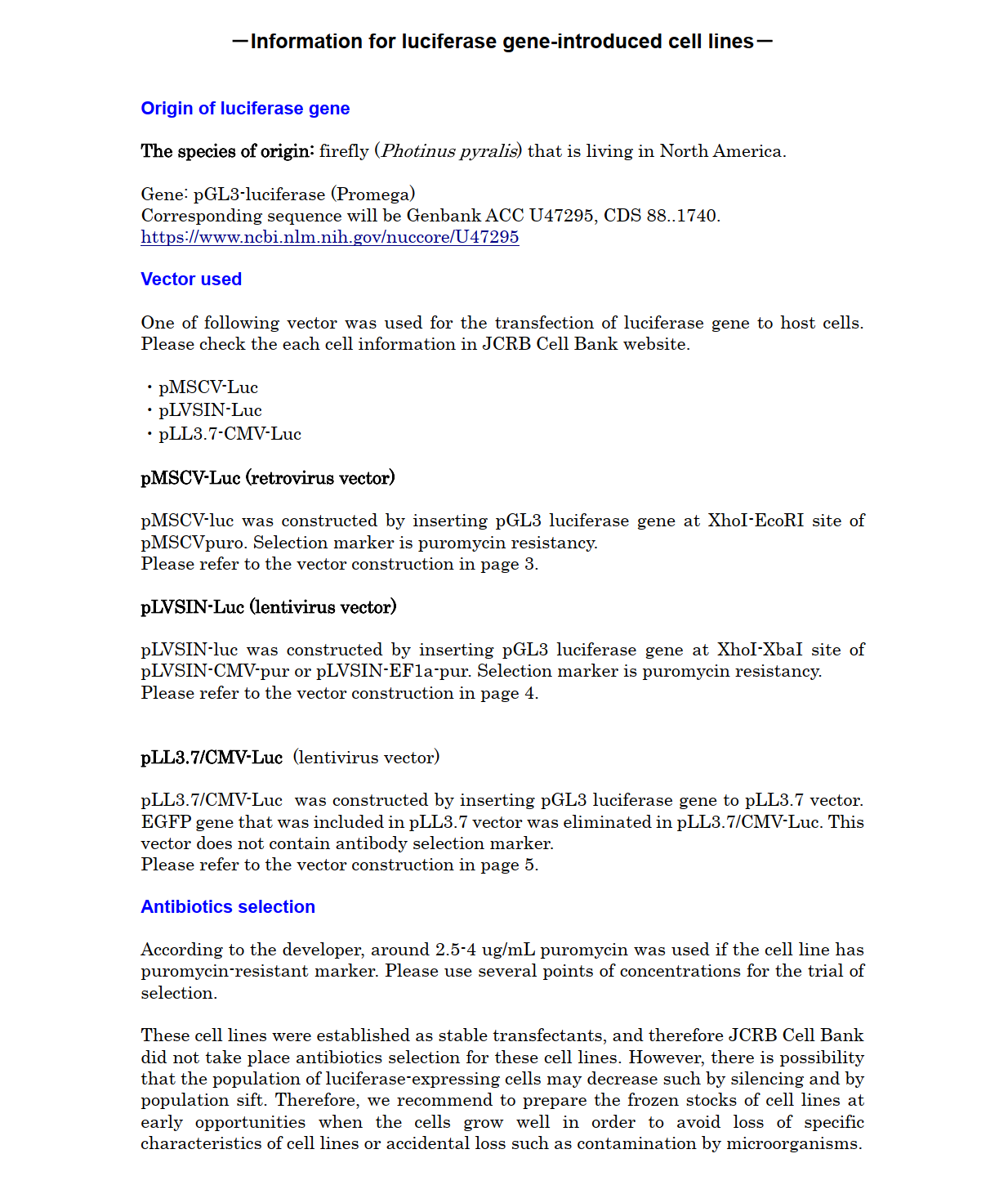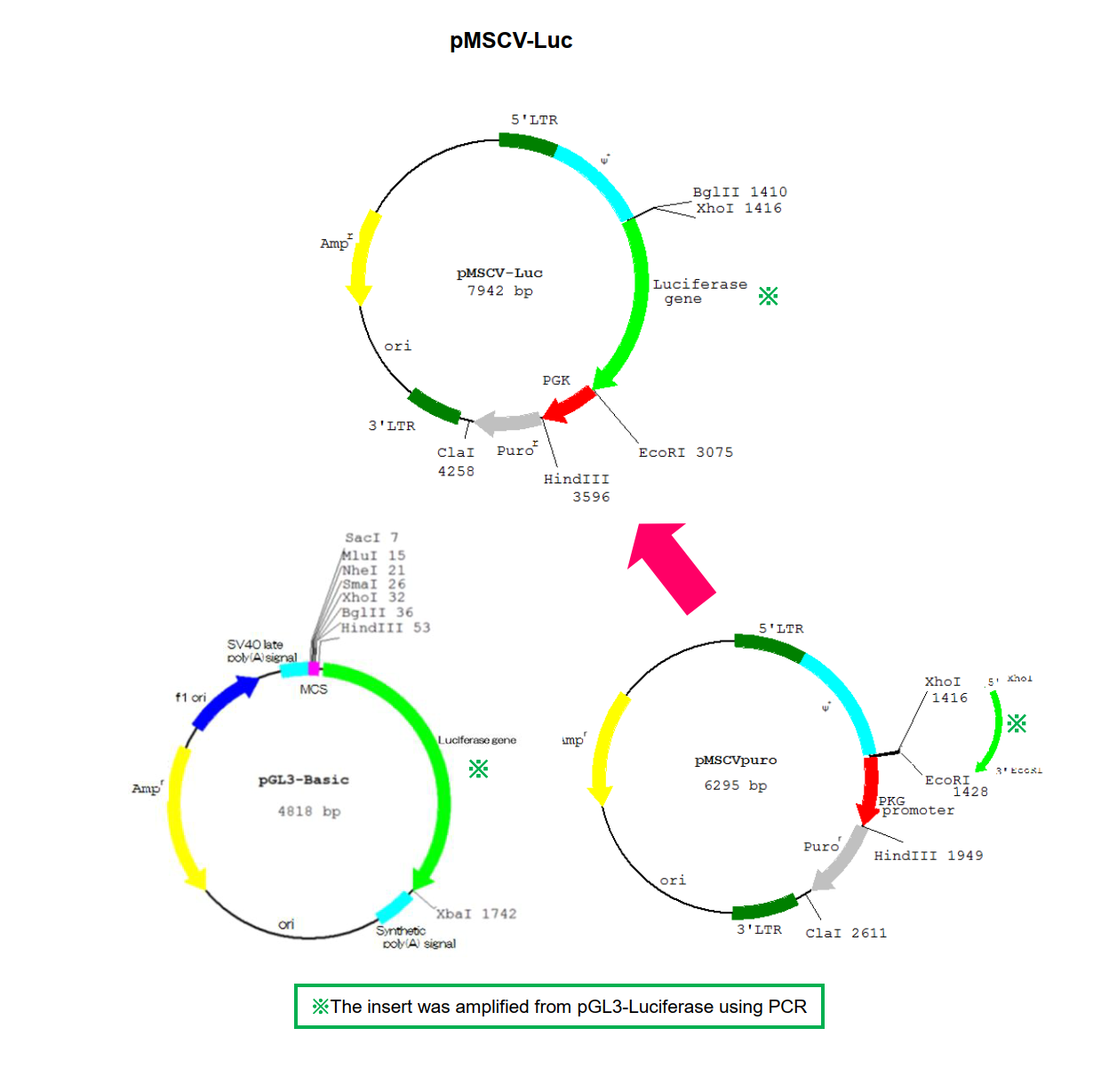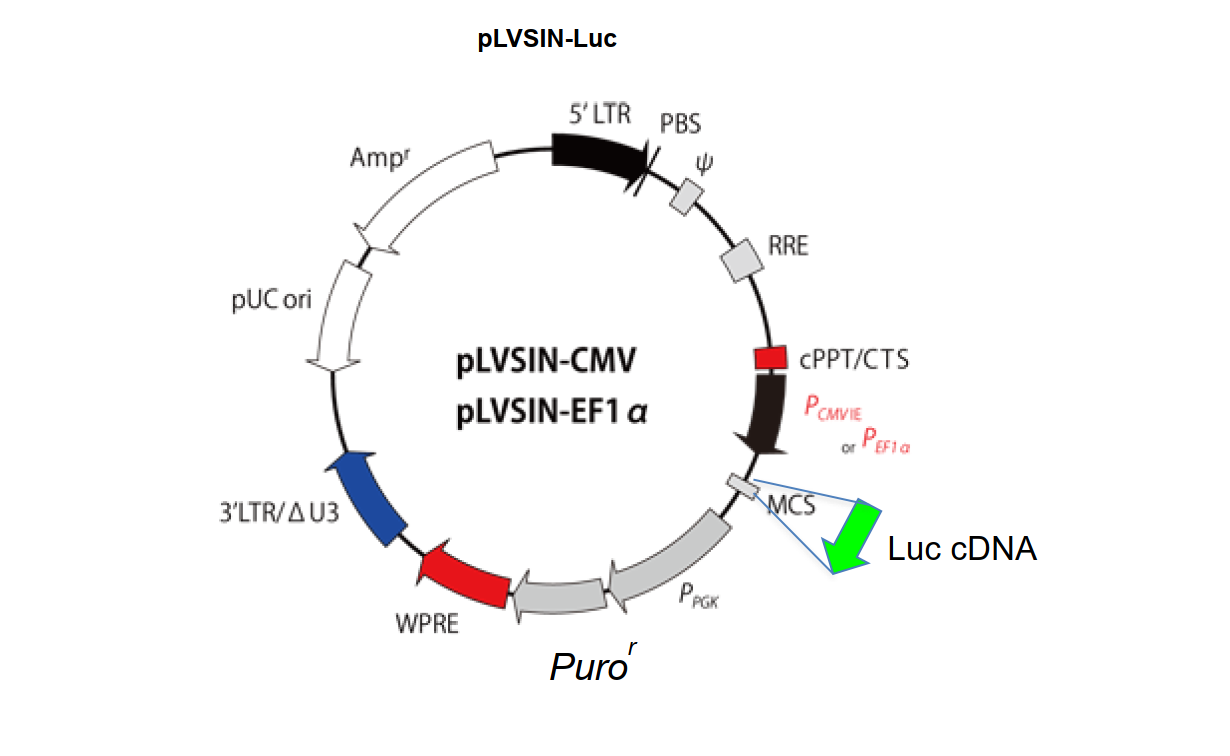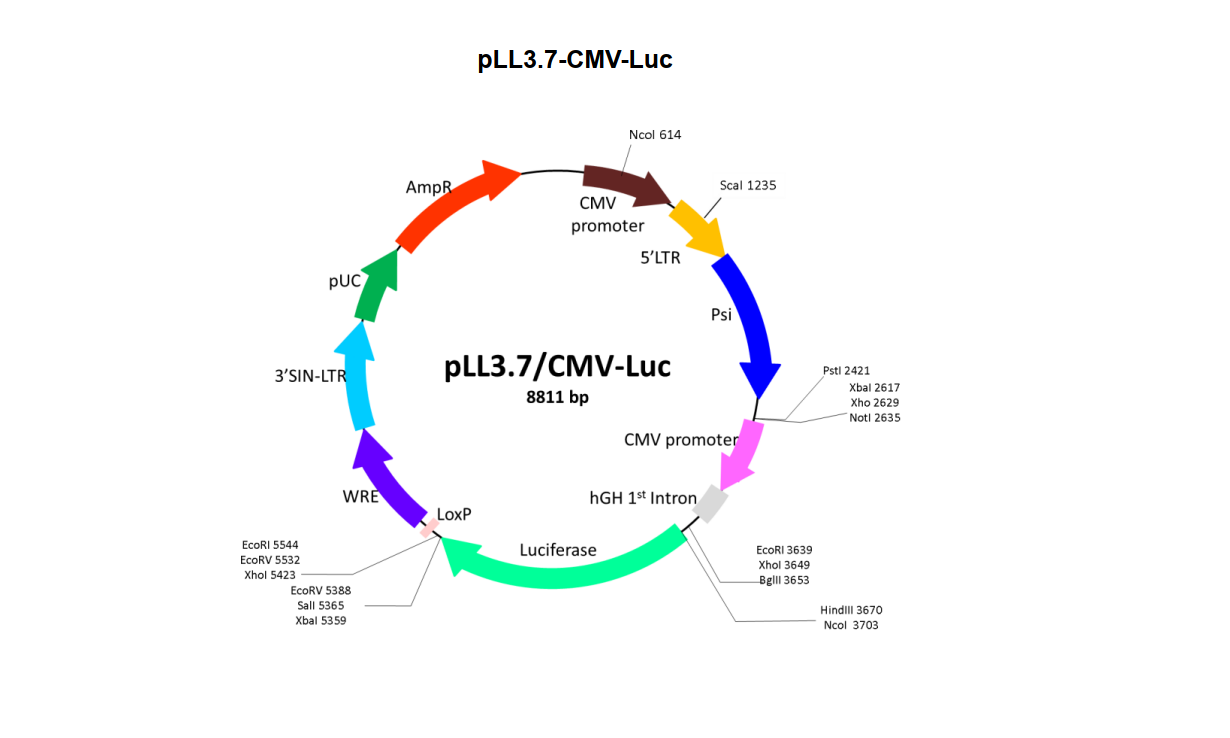JCRB1476 HCC-1954-Luc
Cell information
Important Notice(s)発光細胞 (ルシフェラーゼ発現細胞)の分譲について / Ordering Luc cell lines
Information for introduced genes, etc in luciferase expressing cell lines
Cell type:luciferase-expressing cancer cells (View Pricing Information)
| JCRB No. | JCRB1476 | Cell Name | HCC-1954-Luc |
|---|---|---|---|
| Profile | Luciferase stably expressing cell line (HCC1954; Human breast cancer cell line). | Other Name | |
| Animal | human | Strain | |
| Genus | Homo | Species | sapiens |
| Sex | F | Age | 61-year-old |
| Identity | available | Tissue for Primary Cancer | |
| Case history | ductal carcinoma | Metastasis | |
| Tissue Metastasized | Genetics | pMSCV-luc transfected. Luciferase stably expressing cell line. Oncogene: her2/neu + (overexpressed) | |
| Life Span | infinite | Crisis PDL | |
| Morphology | epithelial cells with occasional vacuole | Character | HCC1954 is positive for the epithelial cell specific marker Epithelial Glycoprotein 2 and for cytokeratin 19, and is negative for expression of estrogen receptor (ER) and progesterone receptor (PR). Puromycin-resistant. |
| Classify | transformed | Established by | Murakami, T. |
| Registered by | Murakami, T. | Regulation for Distribution | To exchange and follow MTA between oversea end-user and cell-developer. |
| Comment | Year | 2011 | |
| Medium | RPMI1640 medium with 10% fetal bovine serum. | Methods for Passages | Cells are treated with 0.02 % EDTA and 0.25% trypsin. |
| Cell Number on Passage | split ratio = 1/4 - 1/8 | Race | East Indian |
| CO2 Conc. | 5% | Tissue Sampling | mammary gland; breast |
| Tissue Type |
| Detection of virus genome fragment by Real-time PCR | |||||||||
|---|---|---|---|---|---|---|---|---|---|
| Detected DNA Virus | tested | Detected RNA Virus | tested | ||||||
| CMV | - | parvoB19 | - | HCV | - | HTLV-1 | - | ||
| EBV | - | HBV | - | HIV-1 | - | HTLV-2 | - | ||
| HHV6 | - | HTLV-1 | - | HIV-2 | - | HAV | - | ||
| HHV7 | - | HTLV-2 | - |
-/negative. +/positive. nt/not tested. (positive (+) does not immediately mean the production of infectious viral particles.) |
|||||
| BKV | - | HIV-1 | - | ||||||
| JCV | - | HIV-2 | - | ||||||
| ADV | - | HPV18 | - | ||||||
| Notes | |||||||||
| Images |
|---|
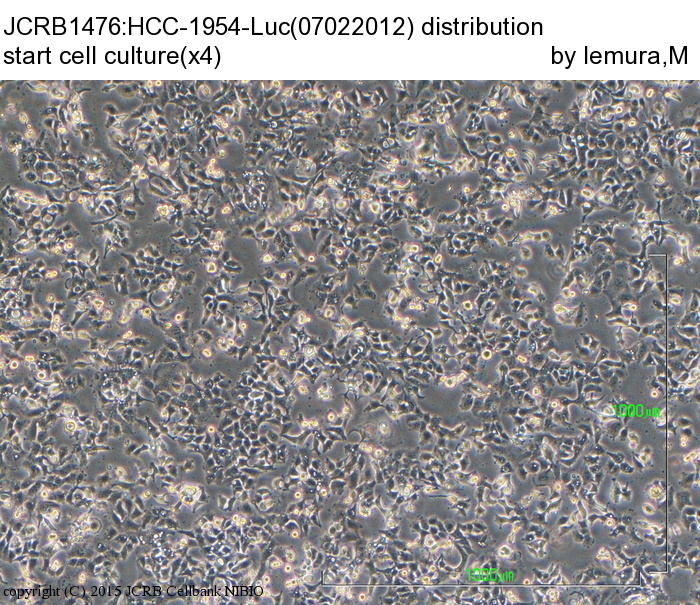 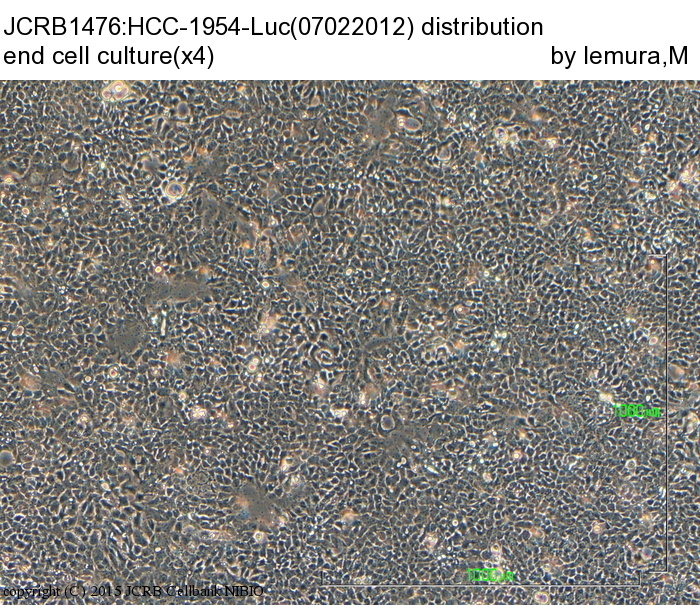  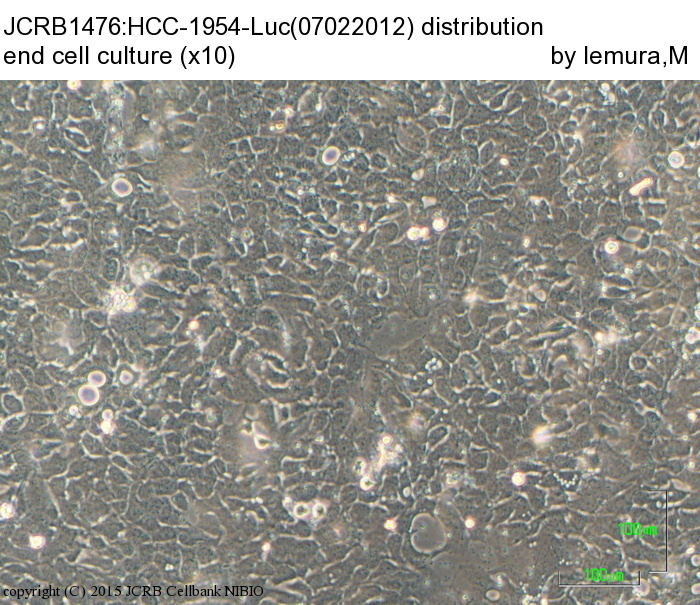 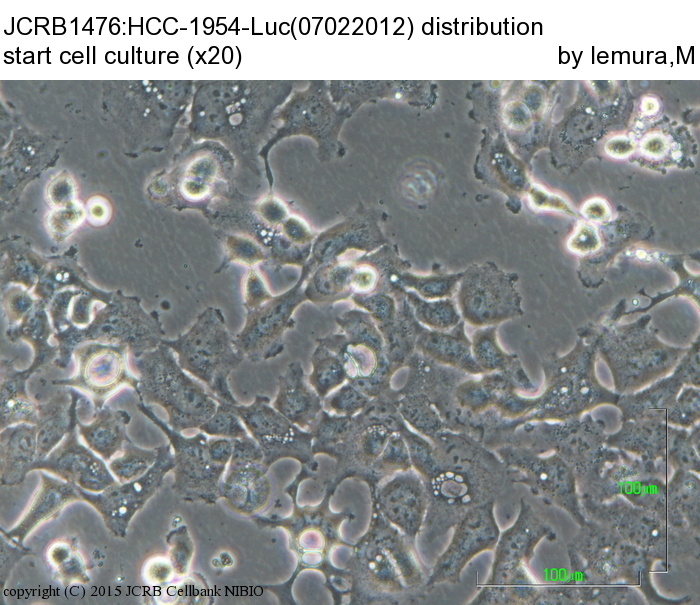 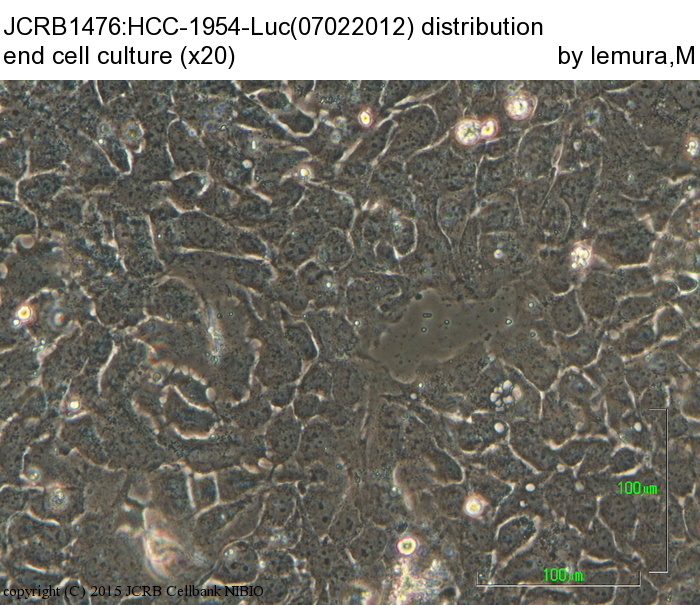  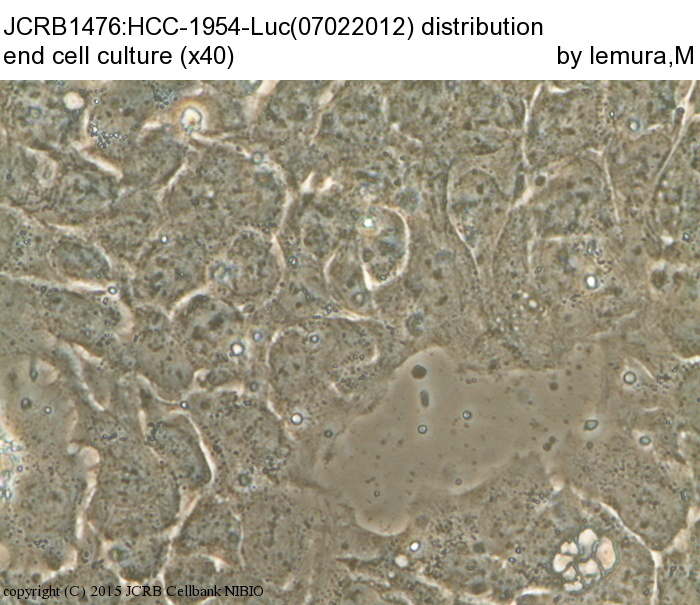 |
LOT Information
| Cell No. | JCRB1476 | Cell Name | HCC-1954-Luc |
|---|---|---|---|
| LOT No. | 07022012 | Lot Specification | distribution |
| Medium | RPMI1640 medium(GIBCO) with 10% heat inactivated fetal bovine serum(SIGMA027K03911) | Temperature | 37 C |
| Cell Density at Seeding | 1.9-4.3x10^4 cells/sq.cm | Methods for Passages | Cells were harvested after treatment with 0.25%trypsin(GIBCO) and 0.02% EDTA. |
| Doubling Time | NT | Cell Number in Vial (cells/1ml) | 2.8x10^6 |
| Viability at cell freezing (%) | 95.2 | Antibiotics Used | NT |
| Passage Number | p18* | PDL | NT |
| Sterility: MYCOPLASMA | - | Sterility: BACTERIA | - |
| Sterility: FUNGI | - | Isozyme Analysis | NT |
| Chromosome Mode | NT | Chromosome Information | NT |
| Surface Antigen | NT | DNA Profile (STR) | D5S818:11 D13S317:8,9 D7S820:10,11 D16S539:9,11 VWA:18,19 TH01:6,7 AM:X TPOX:8,9 CSF1PO:10 |
| Adhesion | Yes | Exoteric Gene | NT |
| Medium for Freezing | Cell Banker BLC-1(Nihon Zenyaku Industries) | CO2 Conc. | 5 % |
| Viability immediately after thawing (%) | Additional information |
| Images |
|---|
        |
| Cell No. | JCRB1476 | Cell Name | HCC-1954-Luc |
|---|---|---|---|
| LOT No. | 03252021 | Lot Specification | distribution |
| Medium | RPMI1640 medium(GIBCO:catalog No.11875-093) with 10% heat inactivated fetal bovine serum(Biowest cat.No.S1820-500 LotNo.S09336S1820) | Temperature | 37 C |
| Cell Density at Seeding | 1.00-5.00x10^4 cells/sq.cm | Methods for Passages | Cells were harvested after treatment with 0.25%trypsin(GIBCO) and 0.02% EDTA. |
| Doubling Time | NT | Cell Number in Vial (cells/1ml) | 2.07x10^6 |
| Viability at cell freezing (%) | 90.24 | Antibiotics Used | free |
| Passage Number | p17* | PDL | NT |
| Sterility: MYCOPLASMA | - | Sterility: BACTERIA | - |
| Sterility: FUNGI | - | Isozyme Analysis | NT |
| Chromosome Mode | NT | Chromosome Information | NT |
| Surface Antigen | NT | DNA Profile (STR) | |
| Adhesion | Yes | Exoteric Gene | NT |
| Medium for Freezing | BAMBANKER(LYMPHOTEC Inc.,CS-02-001,NIPPON Genetics Co., LTD) | CO2 Conc. | 5% |
| Viability immediately after thawing (%) | 78.7 | Additional information |
| Images |
|---|
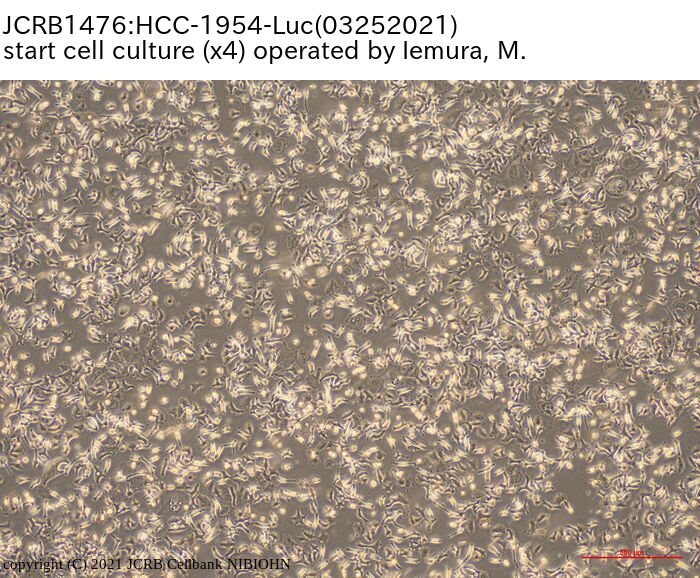 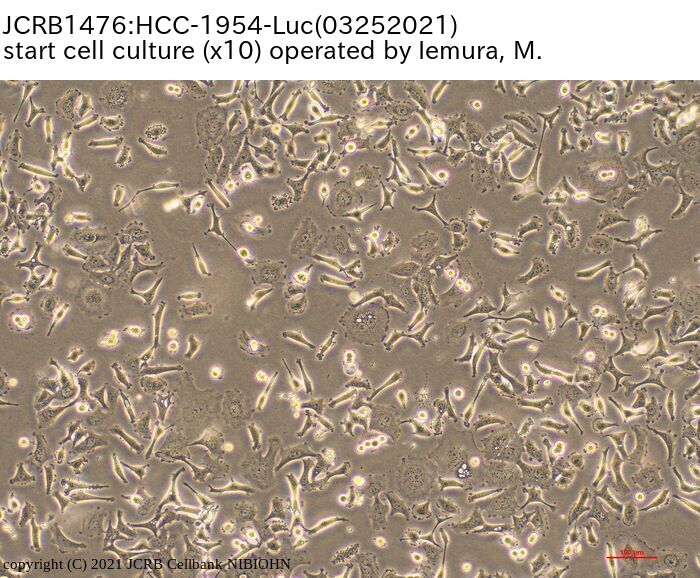 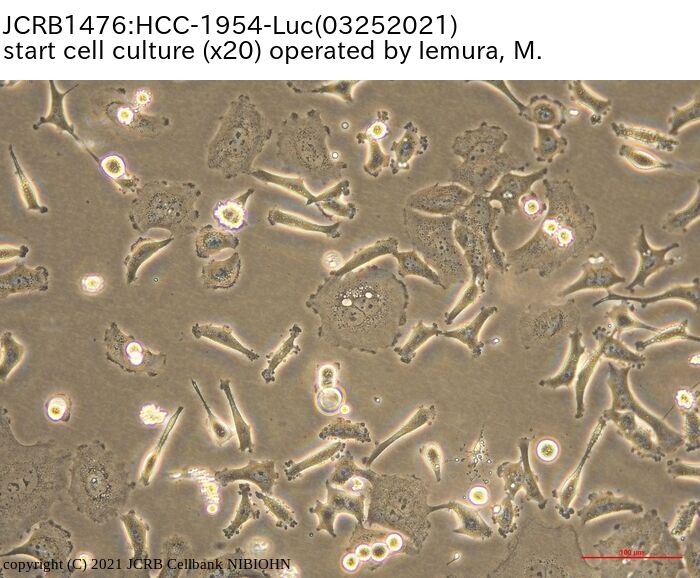 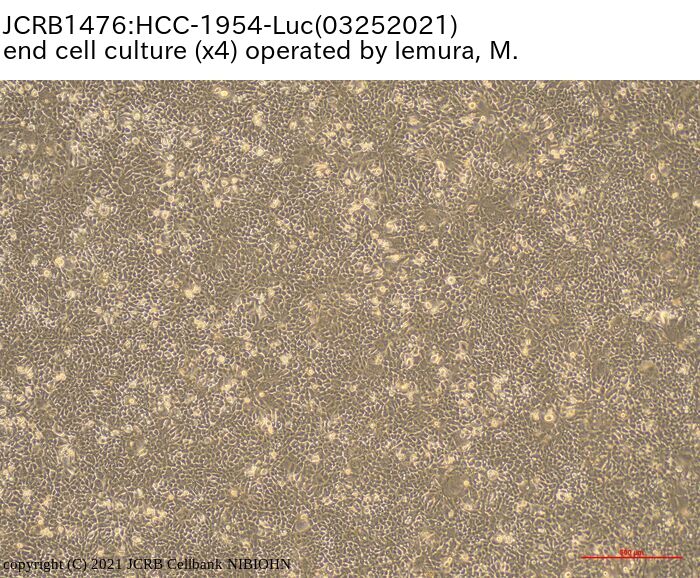 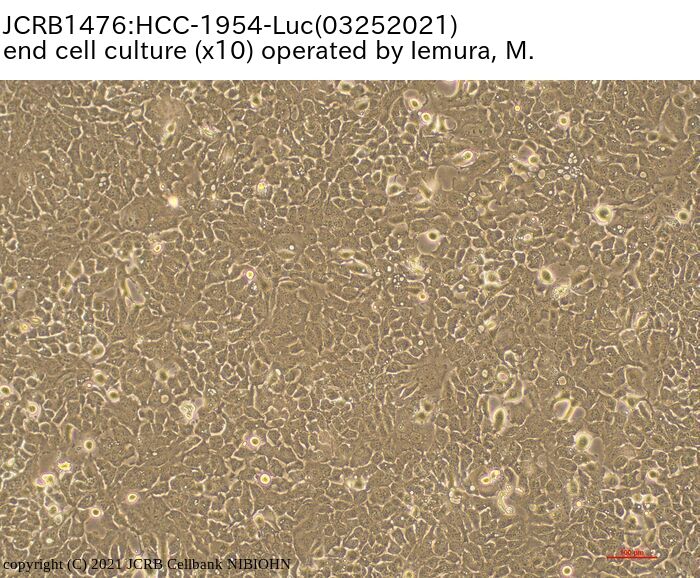 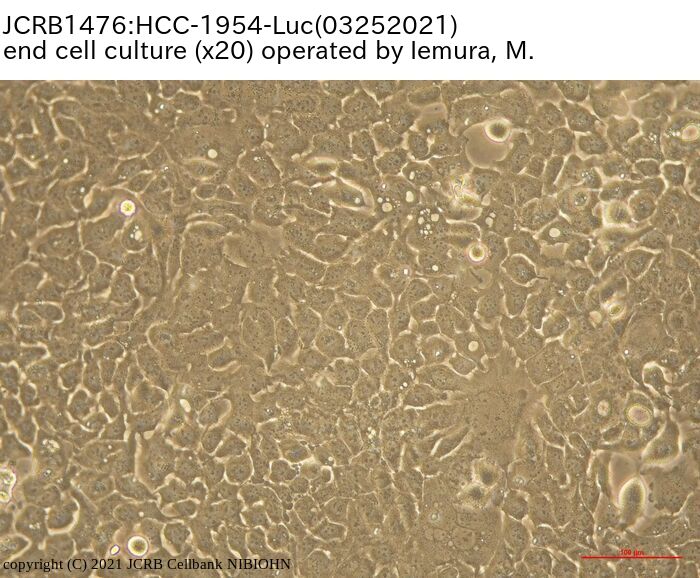 |
